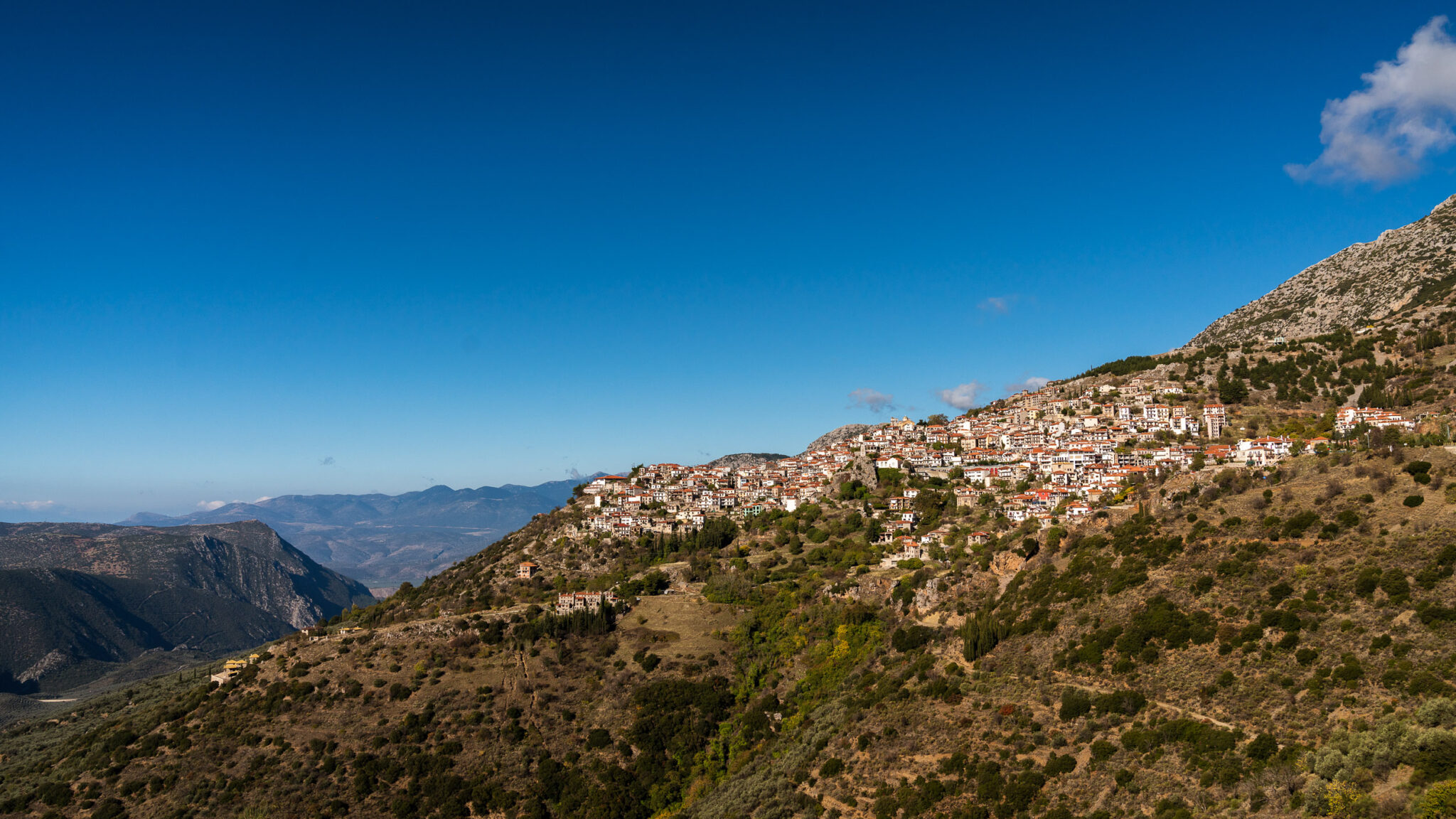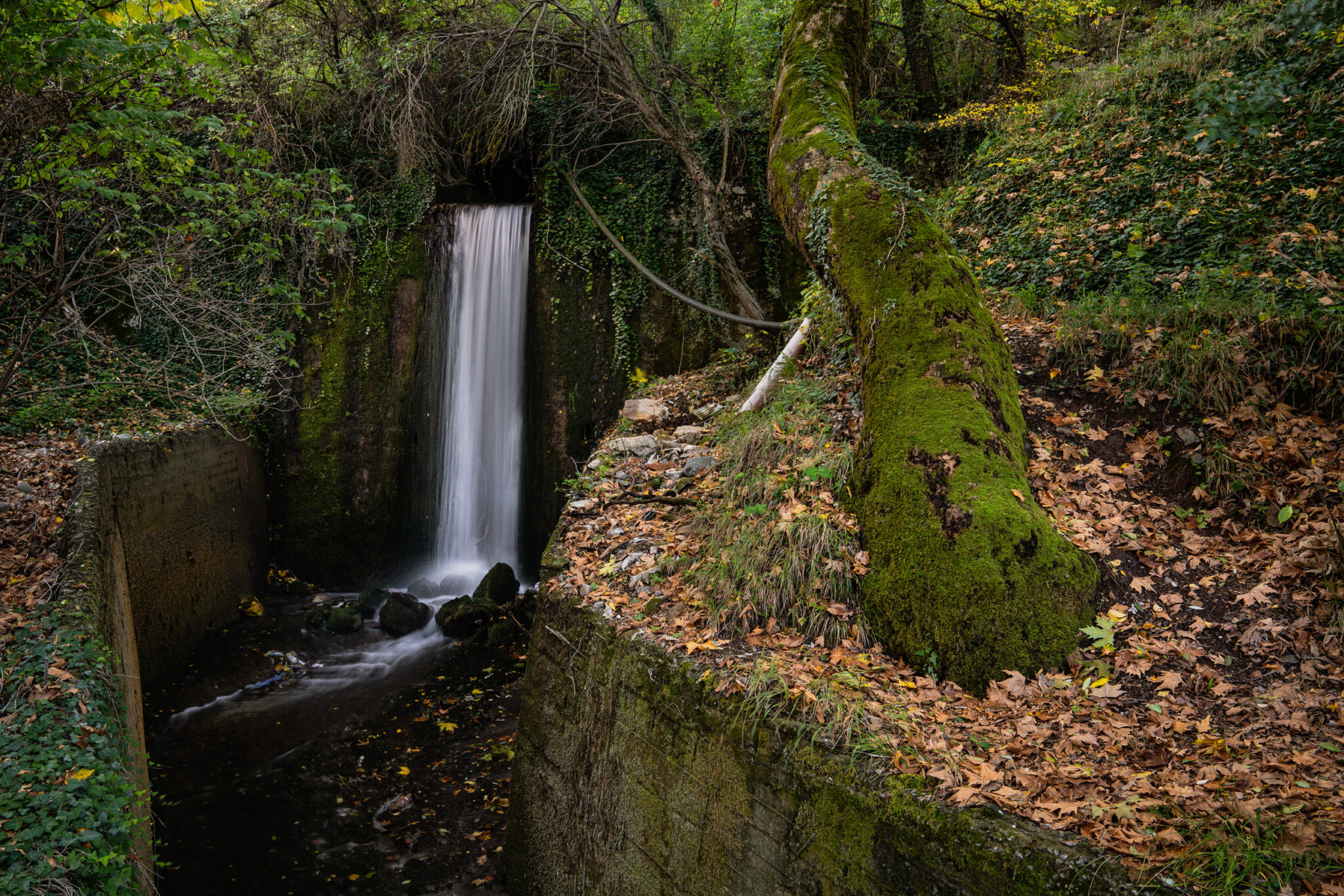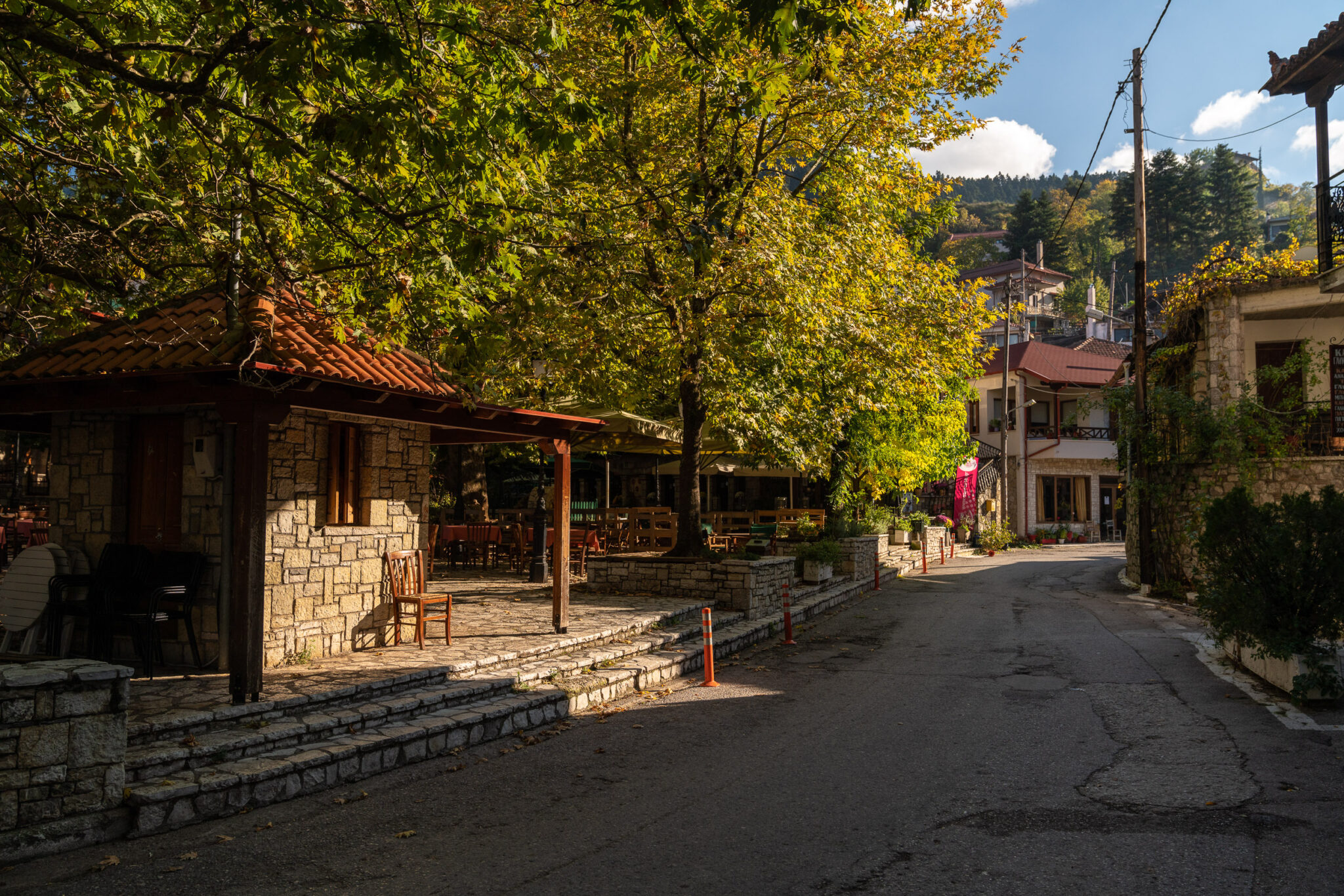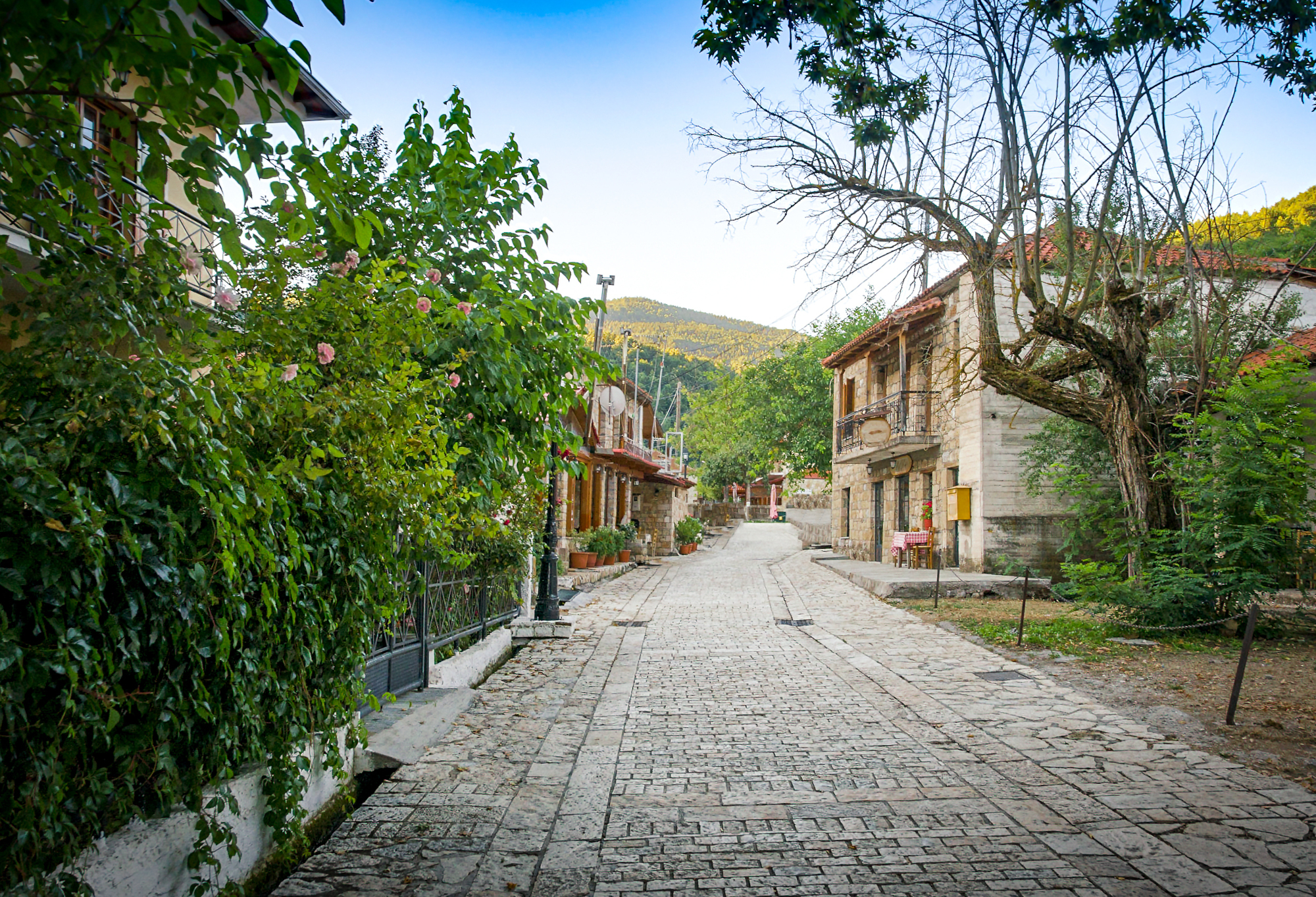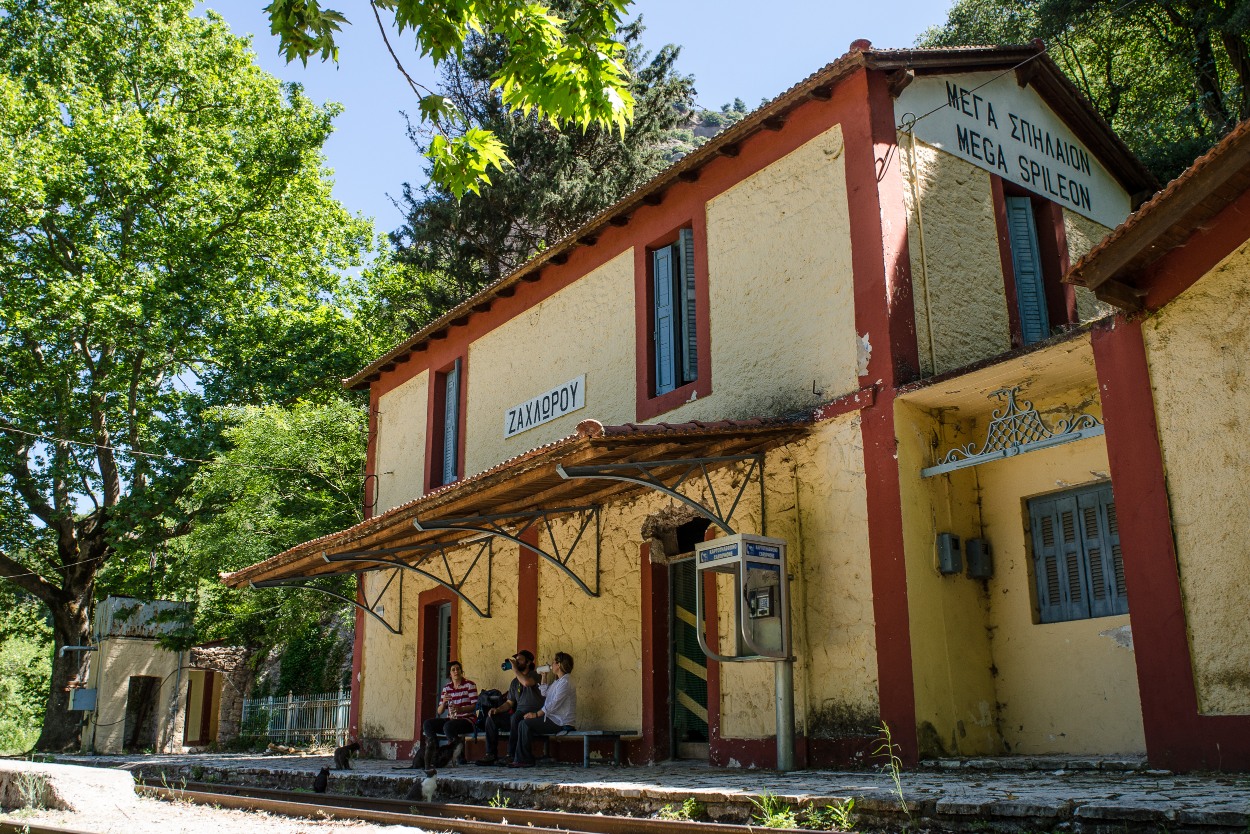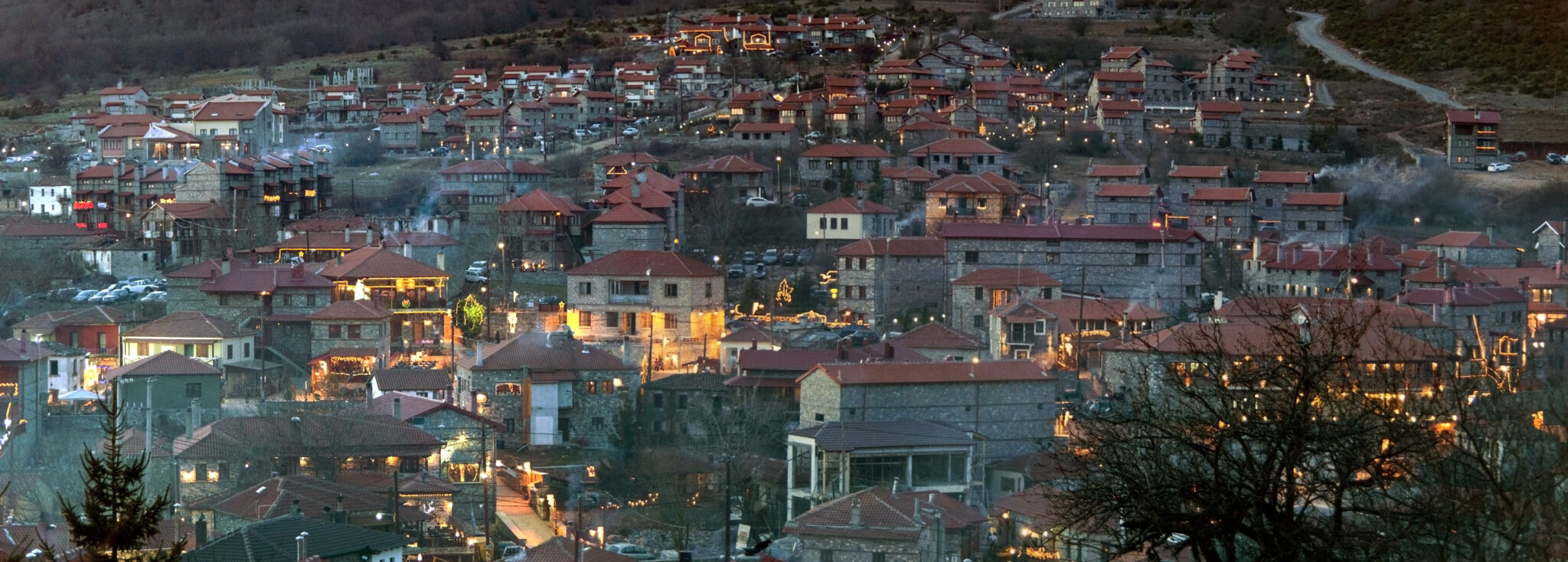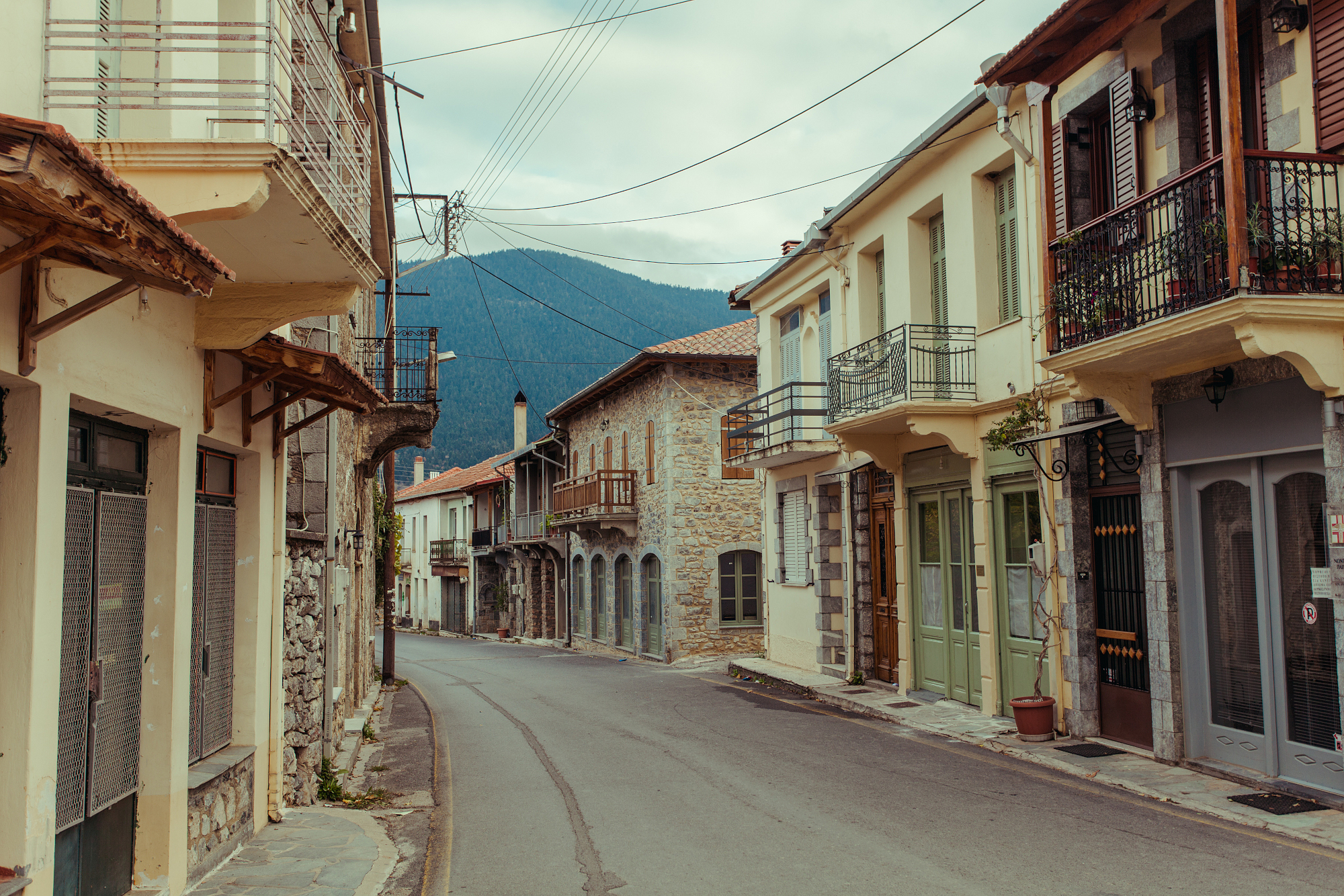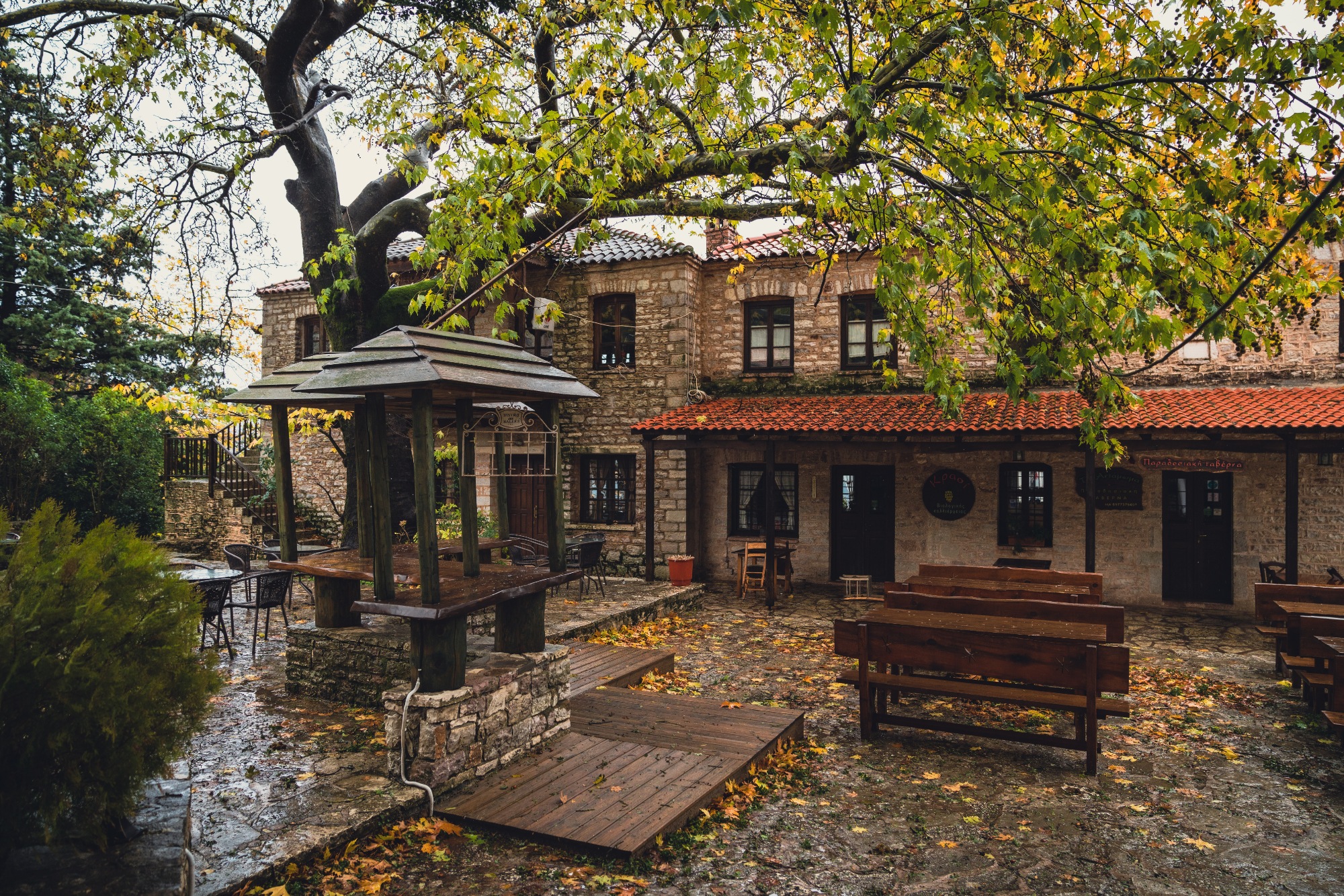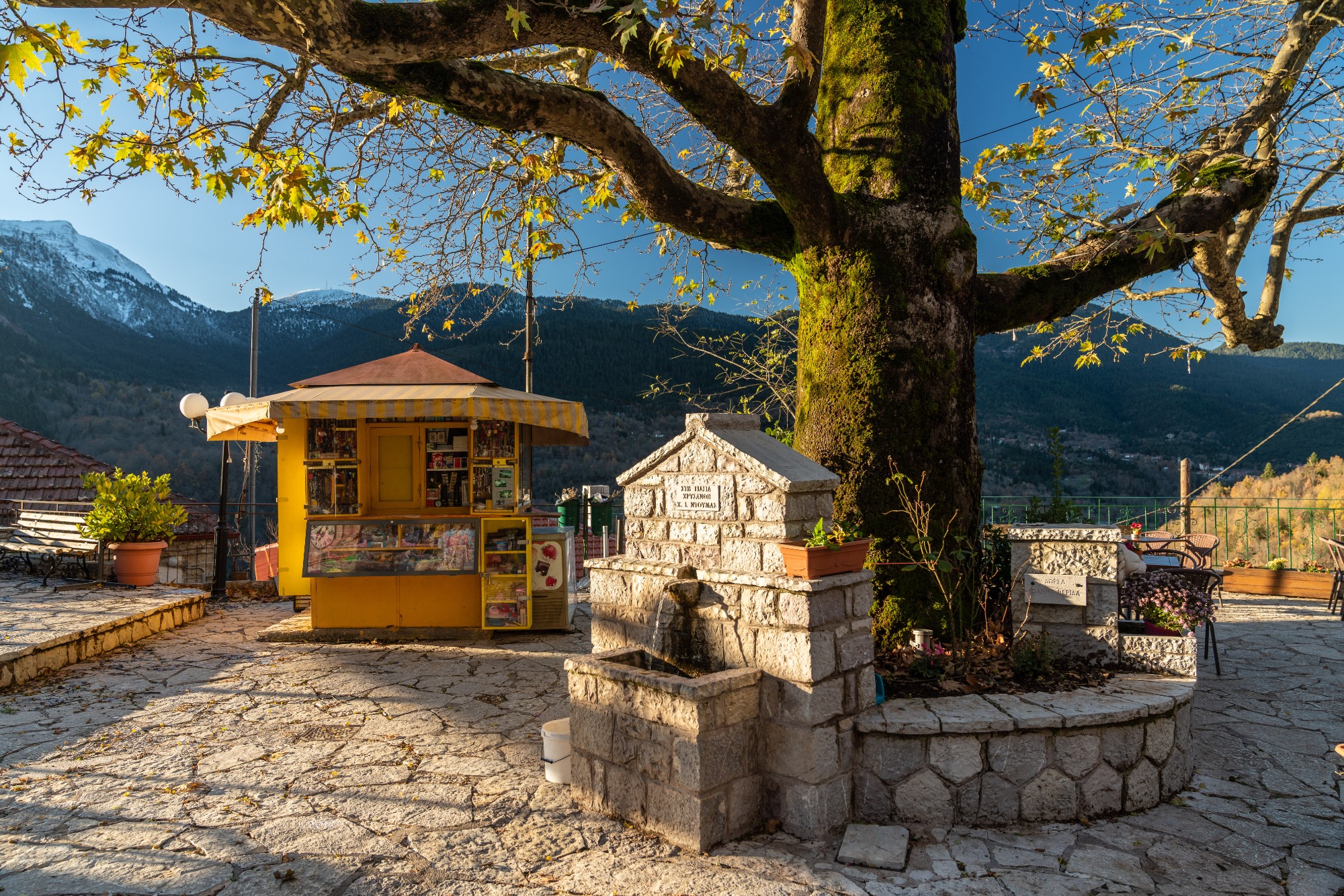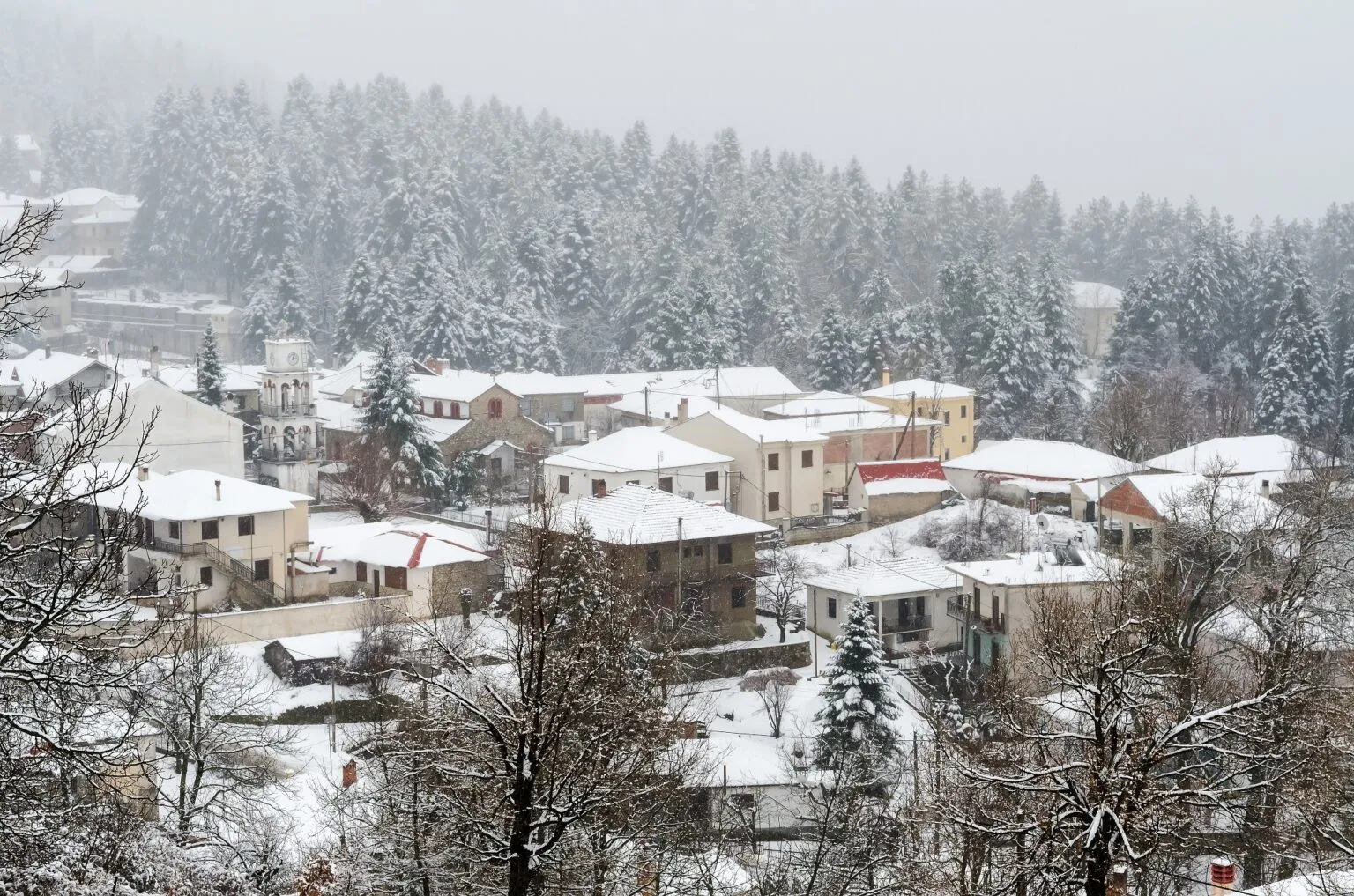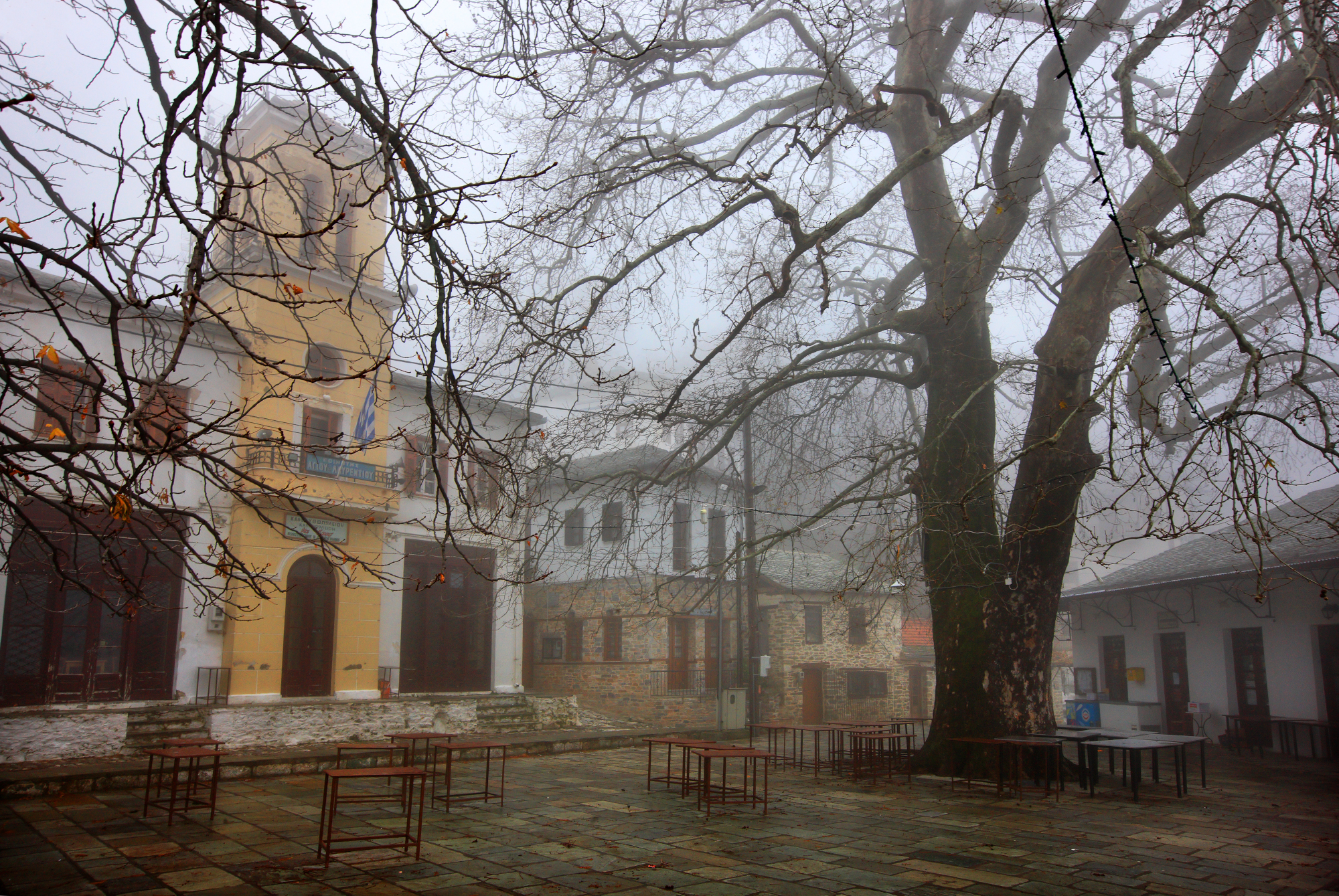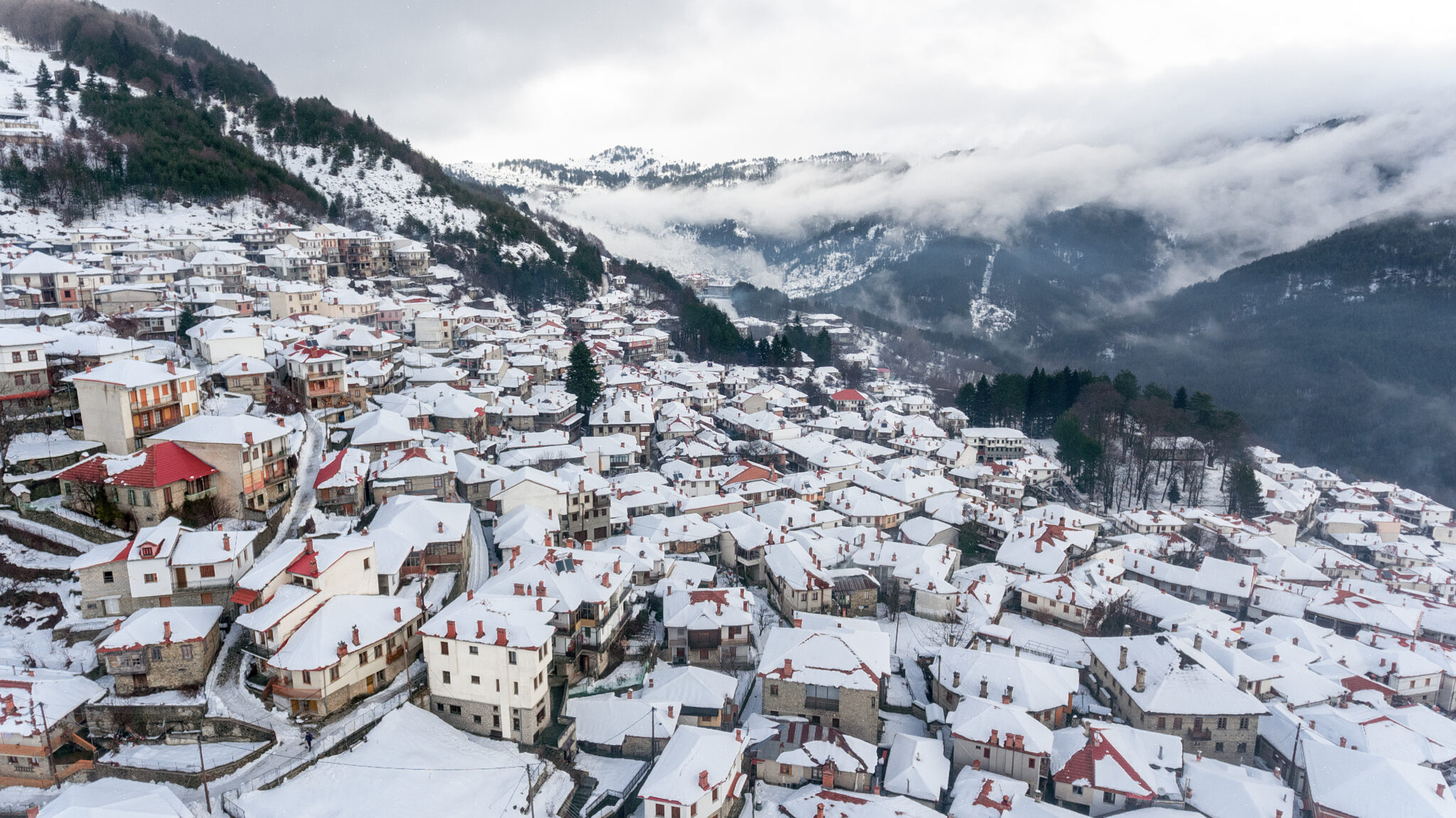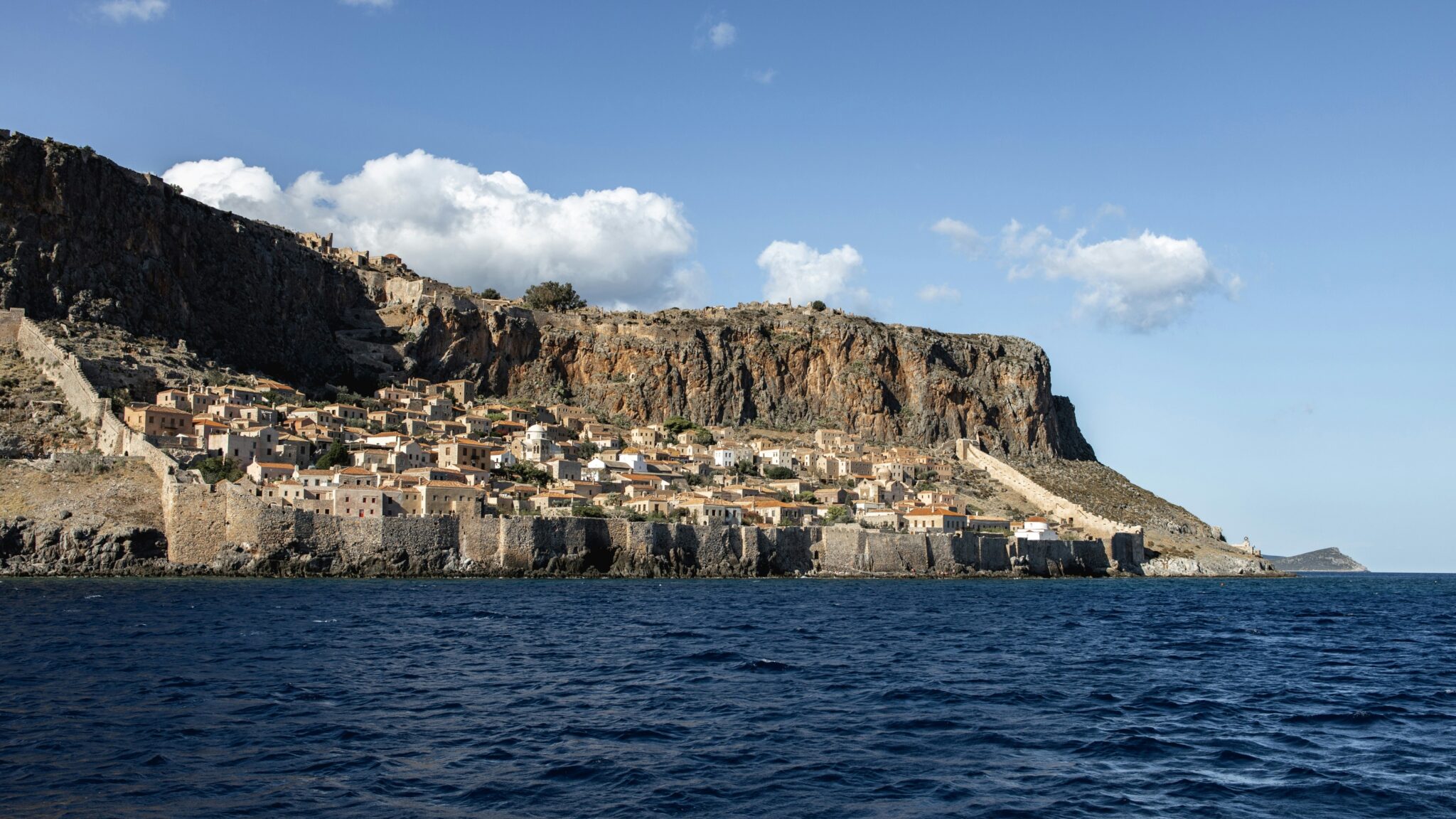Greece has many ski resorts and numerous beautiful villages. But not all ski resorts have traditional villages with scenic alleys, stone mansions, unobstructed views and picturesque squares.
However, there are some amazing ski centres whose surrounding villages are famed for their beauty. In fact, some of them might steal the spotlight. The list below includes just a selection of these, since Greece’s beauties are endless.
Parnassos ski resort
Arachova
It’s the most popular winter destination within the borders – and for good reason. It’s amphitheatrically built at an altitude of 960 m, very traditional, located half an hour away from the largest ski resort of the country, and has amazing lodgings with great amenities. The small cobbled alleys, cosy cafés with fireplaces, famous taverns, and its bars are, in their own right, strong enough reason to visit. Leave your car and stroll around its narrow streets, have a coffee on Lakka square, climb up the 200+ steps to the church of Agios Georgios to see the village from above, as well as the Delphi valley, and walk down to the Clock, a village landmark dated back to the 18th century. The rock the clock is built on served as a natural refrigerator in bygone times. If you would like to go on a long walk, take the road that starts at the clock and leads to the free parking area to see the quieter side of Arachova. At Livadi, individuals in search of something extra, but not into skiing, can rent a snowmobile, ride an ATV, rent snowshoes to go on a walk, and of course, try the famed lamb chops of Roumeli at the local taverns. A bit further up, at the Varko location, on a large clearing to your left, as you’re headed towards the ski centre, you can take the dirt road (during the winter only with a 4Χ4 vehicle) and go on a short drive through the fir forest. If the road is open, go to the location Pirgaki where the forest authority centre of Amfissa is located, to see the stunning view. If you continue on the paved street, you can go to the Defner refuge for a coffee. Make sure to buy formaela, the local cheese, before you leave.
Agoriani
The second most famous village in the area, after Arachova, is Agoriani or Eptalofos. It’s located on the north-western slopes of Parnassos, at an altitude of around 900 m, surrounded by tall firs. The stone houses, winding streets, view, river passing through the village, and surrounding greenery make the village a unique destination. The paved square with the huge plane trees and taverns is a meeting point. The small waterfall, just a few metres from the square, is a must-see. After strolling around the village’s alleys, get in the car and head to the ski centre, even if you don’t want to ski, simply to enjoy the beautiful car ride among the firs. If you want an unobstructed view, settle at a window-side table at the café by the village entrance, on your way in from Arachova. The area also offers an abundance of hiking trails, so put on your sneakers and head to Agia Triada, Agia Paraskevi, Vromovrisi, Vasiliki spring, or Pirgaki.
Kalavrita ski centre
Zarouhla
Zarouhla, at an altitude of over 1,000 m, is one of the most beautiful villages in the area. The stone houses, typical of the local architecture, stand among the pines, plane trees, walnut and chestnut trees and firs. There’s water everywhere here, with creeks crossing the village at various points. Built around the Krathi river creek, Zarouhla has a rich history, as it used to be a central point for the surrounding area – something made obvious by the remaining tower houses. Its cobbled alleys are worth exploring, especially in the winter, when the amazing freshness of the cold and fog covering the village conceals any unpleasant details to make the place seem like something out of a fairy tale. A lovely route, either on foot, or by car, is that towards the gorgeous chapel of Agia Triada that overlooks the village. Take a coffee to go and sit in the large courtyard, under the plane trees and enjoy the view and serenity. The village’s great attraction is Lake Tsivlou, at at altitude of about 700 m, on the slopes of Mount Helmos. A landslide blocked the river Krathi in March 1913, subsequently creating the lake that is surrounded by plane, pine and fir trees, a truly remarkable spectacle.
Kato Zahlorou
Zahlorou is a tiny, gorgeous village built in the gorge of Vouraikos. The rack railway makes a stop here. It’s a scenic village, with stone houses and narrow streets, plane, walnut and mulberry trees, scenic poetry just 24 km from the ski resort. The train station serves as the main square. Taverns set tables around it, creating a meeting point. Apart from strolls around the village, you can also walk to the old watermill, or follow the old trail that starts at the station and reaches the Mega Spileo monastery. The monastery, an incredible multi-storey building constructed in the 4th century, was built on vertical rocks, at a height of approximately 900 m. The main church, decorated with frescoes dating back to 1653, has great marble work on the floor, a wooden altar, while the embossed icon of Panagia Vrefokratoussa made with wax and mastic is very special. The Vouraikos gorge is also a great option – weather permitting – for a hike. One of its more beautiful parts, relatively accessible, starts at Zahlorou and reaches Kalavrita, with the path stretching by the river, through amazing nature. The Spileo ton Limnon cave is also near the village. It features thirteen underground lakes at three different levels, as well as impressive stalactites and stalagmites. And, if you’ve managed to reach the cave, it would be a shame not to make it to the plane forest of Planitero and the spring of the river Aroanios.
Kaimaktsalan ski centre
Paleos Agios Athanasios
This village consists almost entirely of stone houses possessing a very strong element of Macedonian tradition. They were built in the late 16th century. The village, listed for its cultural heritage, was previously named Tsegani, and, in the past, was almost deserted as the harsh winter weather forced the majority of the villagers to move to a lower location, establishing Neos Agios Athanasios. However, when the Kaimaktsalan ski centre opened, in the mid-90s, the village was revived and is now full of design guesthouses providing every amenity, and also offers great taverns. Even though the village is built at a great altitude of around 1,200 m, it’s not an uphill area, which facilitates strolling around the cobbled streets. Visit the church of Analipsi, a three-aisled basilica of the 17th century with lovely Byzantine icons, just outside the village. It offers an amazing view of the area. If you don’t go to the ski resort for skiing, you can stop over at Lake Vegoritida, close to the village, or at the Pozar baths for a natural spa in the warm waterfalls. The baths are not very close well worth reaching. We recommend you do visit the ski centre, however, even if just for its view of the whole valley below. If it’s a day with low clouds covering the area, you’ll feel like you’re up in the air.
Mainalon ski centre
Alonistaina
Alonistaina, at an altitude of 1,200 m, on the slopes of Mainalon, surrounded by fir and chestnut trees, one of the most beautiful villages of Arcadia, is also a listed settlement. The village’s stone houses, resembling towers and featuring large arched openings, were built by local craftsmen famed for their craftmanship. A stroll around the village is a must just to admire the lovely two-storey houses that transport you to the previous century – and even further into the past. Surrounded not just by a dense forest but also springs and streams, Alonistaina is a village you must definitely visit. The fir-covered route leading to it is simply magical. For the record, Greek Independence leader Theodoros Kolokotronis’ mother, Zampeia Kostaki, was from Alonistaina and her tomb is at the village square, next to the church of Agia Paraskevi. The other small but beautiful sights of the village include the old inn, watermill, and chapel of Agios Nikolaos, while exploring the forest can be easily done as it’s just a stone’s throw away.
Vytina
One of the most renowned villages of mount Mainalon, Vytina is a central point of the area. It’s built at an altitude of 1,033 m and is surrounded by a lovely fir forest. Its traditional architecture, along with the fact that is it just half an hour away from the ski centre, with amazing guesthouses, hotels and taverns, make the village an extremely popular destination all year long. A walk down the “Path of Love”, lined with maple and plane trees is a must. Vytina is also an ideal base for hiking on the Menalon Trail; during the winter hiking may be hard, but you can choose one of the easier paths and just walk part of it. The village square is ideal for a cup of coffee and face spotting, but don’t forget to also visit the church of Agios Tryfonas, dating back to 1846, as well as the Folklore Museum.
Karpenisi ski resort
Koryschades
Koryschades is built at 940 m, surrounded by the summits of Palaiokastro, Lekogianni and Psilo Kotroni. Having preserved, to a great extent, its traditional character, it’s one of the most popular villages of Karpenisi. A huge plane tree stands at the cobbled main square, also the location of the beautiful village church, Agios Athanasios, built in the mid-19th century, as well as taverns and cute cafés. The stone mansions combine Epirotic architecture with the Constantinople style. The traditional guesthouses, cute houses, and charming little taverns, all with fir-covered slopes of Velouchi as a background, make the village a must-visit destination. Walk to its lower side, where the creek that leads to the Karpenisiotis river is situated. Or head up the Palaiokastro hill, where you can see the remains of ancient tombs as well as ruins of an early Christian castle, and, of course, enjoy the view of the surrounding mountaintops. Visit the Museum of National Resistance that is housed in the old school that has been declared a historical monument. This is where the first national assembly for the liberation of the Greeks took place, in 1944. Among other things, at the museum you’ll see a rich photography archive, frescoes depicting the heroes of the Greek resistance, as well as heroes of the 1821 War of Independence. At Koumasia, among the fir trees, a lovely monastery dedicated to Virgin Mary dates back to the 17th century.
Megalo Horio
Amphitheatrically built on the slopes of Mount Kaliakouda, Megalo Horio is gorgeous. Traditional, covered in oaks and walnut trees, and also featuring running waters, its appealing cobbled alleys invite you to explore the village and admire the stone mansions. On your strolls, you’ll discover shops with folk art and handicraft, as well as charming cafés. Make sure to stop at the Folklore Museum that presents the way of life of the locals through its exhibits. For longer walks, follow the uphill path at the entrance of the village that leads to the refuge and the Lakkomata location, where the monument of the Battle of Kaliakouda is located. This spot offers a panoramic view of the village and the surrounding area. From the village’s parking area, a trail headed towards Kefalovriso leads to a beautiful creek with bridges. You can also choose one of the large forest roads and walk or drive among the fir trees. Megalo Horio is famous for its galaktompoureko (Greek semolina custard pie), so you must stop at Karvelis to have some.
Pertouli ski centre
Elati
Built on the slopes of Koziakas, at 921 m, among the fir trees, this village justly attracts the attention of visitors in the area. Here, too, the stone houses are abundant and make the village beautiful and picturesque. Elati has amazing guesthouses and taverns with great food, in keeping with the entire Thessaly region’s reputation for quality cuisine. Elati is about 8 km from the Pertouli ski resort, something of an extra bonus. On your walk around the village, you’ll come across old fountains, mansions of previous times, as well as shops with local products such as homemade marmalade and hilopites (traditional Greek pasta). The dirt roads that head into the forest are great options for easy hikes among the firs. A visit to the church of Kimisi tis Theotokou to admire the lovely wooden altar, is well worth it.
Pelion ski resort
Agios Lavrentios
Agios Lavrentios is very close to the Pelion ski resort Agriolefkes. Its traditional style and amazing view of the Pagasetic gulf have put it on the map in the recent years, even though cars are not allowed in the village. Its low-key vibe also makes it one of the most romantic villages of Pelion. It got its name from the Agios Lavrentios monastery that was built by Roman-Catholic Benedictine monks during the Crusades, around the 11th century. The monastery was later abandoned and was rebuilt as a Christian Orthodox monastery in the 14th century, which is when the village was founded. A visit to the monastery is a must. Agios Lavrentios possesses unique beauty. It features many restored mansions, mostly from the 18th century, built by skilled craftsmen from Epirus, including the Stellos family tower with beautiful sachnisi bay windows, the Liantzoura and Apostolou mansions, and the Miller tower. The vilage has over 20 fountains, and it offers one of the finest cobbled alley networks. Having coffee at the plane-covered square offers a view that covers virtually all of the Pagasetic gulf. The small alleys and paths, easy to walk, head into a forest of walnut, apple and chestnut trees, while one of the tracks leads to the Panagia Souravlou church, with a beautiful courtyard and views of Drakeia and Chania.
Kissos
Kissos is just 12 km away from the ski centre and is a small but gorgeous village. It’s almost hidden away by the beech, walnut, chestnut and fir trees. The village, a serene place, features stone houses, fountains and surrounding waterfalls, overlooks the Aegean Sea, and is one of the best places to stay at on the mountain. The impressive three-aisled basilica of Agia Marina, with a unique altar, made of linden wood, lined with gold leaf, is dated back to the 17th century. Situated at the village square, it is the village landmark. Entering Kissos from Mouresi, you’ll see the waterfall of Agios Konstantinos, locally referred to as Mavroutsa. The Daimaki spring is near the square, while walking further leads leads to the Timpano spring. The village has nice paths and streets that are perfect for relaxing strolls, such as one that leads to Agios Efstathios church, offering an amazing view, or another that leads to Chania.
Metsovo ski resorts
Metsovo needs no introduction. Most of us, if we haven’t stayed there, have at least stopped for a coffee or food after skiing in the nearby ski resorts, three in total: Karakoli, Profitis Ilias and Anilio Park. This mountainous town, listed as a traditional settlement and nestled on the slopes of Pindos at an 1,160 m altitude, is the most beautiful place to stay at in the area. Having preserved, to a great extent, its traditional style, it may be considered too much of a tourist attraction by some, but it’s very picturesque, with lovely mansions, old and new, while it offers great accommodation and food options. Metsovo is surrounded by lush vegetation, has springs and fountains, delicious cheese varieties and a folklore aesthetic that some find a bit excessive, but is still part of the country’s tradition and roots. It is renowned for flokati rugs, traditional betel bags, wooden spoons, churns, textiles and patounia (traditional knitted footwear, worn by women in the past). On your strolls around Metsovo, make sure to stop at the Averoffio Garden, an amazing park with trees that are found in Pindos. Near the river Metsovitikos river, you’ll find the Kimisis tis Theotokou monastery, which, along with the monasteries of Agios Nikolaos and Zoodochos Pigi at the Kiatra Rosia location, have been declared protected monuments. All are worth visiting. At the town, the Metsovo Folk Art Museum exhibits traditional engraved wooden furniture, jewellery, textiles, embroideries, costumes, copper vessels, swords, guns, coins, agricultural vessels and icons dated back to 1650-1850. In addition, the Averoff Museum presents a collection that includes more than 200 paintings by prominent painters of the 19th and 20th century, among them Moralis, Gyzis, Lytras and Maleas. If in the area during spring, it’s worth hiking along the trails of the Valia Calda national park. During the winter, a visit to the artificial Aoos lake is a must, as it turns into a winter wonderland when it snows. Before you leave, make sure you stop at the Tossizza Foundation Dairy to get some smoked Metsovone cheese.
Milia
The small village of Milia, at 1,160 m, is also on the fir-covered slopes of Pindos, very close to the Valia Calda national park, on the borders between the prefectures of Ioannina and Grevena. According to testimonies, it was built before the 16th century and even though it has been declared a protected traditional settlement, tourism hasn’t really “arrived” yet, so things here remain calm. The residents, of Vlach origins, mostly work with timber, making everything from power utility poles, barrels, wooden household items and vessels. The uphill cobbled alleys, stone houses with ontas (living space used during the winter), wood workshops and the enchanting surrounding nature undoubtedly make Milia one of the most beautiful villages near the Metsovo ski centres. At the square, you’ll find a glass display with an embalmed bear. The animal, placed at this central location to raise awareness and encourage people to protect the local wild fauna, was found wounded and, despite the villagers’ best efforts, could not be saved. At the entrance of Milia, coming in from Metsovo, you’ll come across a small nerotrivi (old washing facility), while walking towards Krania leads to the Boulouvarou waterfall and a gorge of the same name, that can be reached along a path.



